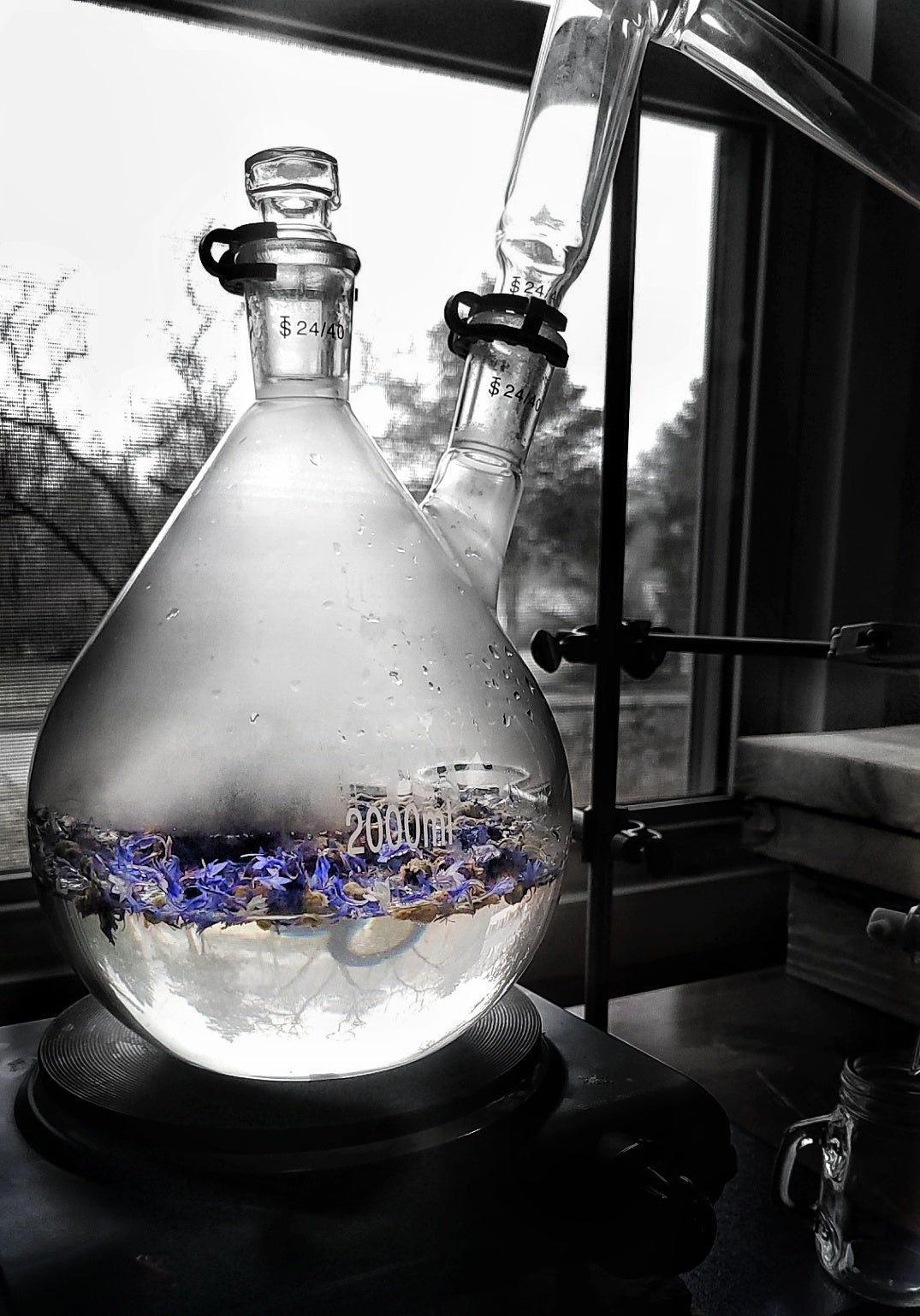
The Art of Distilling: Unlocking Essential Oils and Hydrosols
Distillation is one of the oldest and most effective methods of capturing the fragrant and therapeutic qualities of plants. For centuries, cultures around the world have used distillation to transform leaves, flowers, roots, and resins into aromatic treasures: essential oils and hydrosols. If you’ve ever used lavender essential oil to calm your mind, or spritzed rose water on your skin, you’ve experienced the magic of this ancient craft.
In this post, we’ll explore how distillation works, what makes essential oils and hydrosols unique, and why this process remains so valued today.
---
What Is Distillation?
At its core, distillation is the process of separating the volatile (aromatic) compounds from plant material using steam or water. The plant matter is placed into a still, and steam is passed through it. This heat and moisture release the plant’s aromatic molecules, which rise with the steam.
When the steam is cooled and condensed back into liquid, it naturally separates into two products:
Essential Oil – the concentrated, volatile aromatic compounds that float to the top.
Hydrosol – the aromatic water left behind, infused with the water-soluble components of the plant.
This is a gentle, sustainable way to capture both the intensity of essential oils and the subtlety of hydrosols.
---
Essential Oils: Potent Plant Extracts
Essential oils are highly concentrated and represent the pure “essence” of a plant’s aroma and properties. Just a few drops can hold the power of a whole bouquet of flowers or a grove of trees.
Key characteristics of essential oils:
Potency: They are strong, so they should always be diluted before applying to skin.
Uses: Popular in aromatherapy, massage oils, skincare, natural perfumes, and cleaning products.
Shelf Life: With proper storage (in dark glass bottles, away from heat and light), most oils last 1–5 years, depending on the plant.
Some well-loved essential oils include lavender for relaxation, peppermint for clarity, and frankincense for grounding.
---
Hydrosols: Gentle Aromatic Waters
Hydrosols, sometimes called floral waters, are the co-product of distillation. Unlike essential oils, they are water-based, making them milder, more versatile, and safe for direct use.
Key characteristics of hydrosols:
Gentle: Perfect for sensitive skin and children.
Uses: Face mists, body sprays, room refreshers, toners, and culinary creations.
Shelf Life: They’re more delicate than essential oils, usually lasting 1–2 years if refrigerated.
Rose hydrosol is a popular skin soother, while peppermint hydrosol makes a refreshing cooling spray.
---
The Beauty of Both
Essential oils and hydrosols are two sides of the same coin. Where oils are powerful and concentrated, hydrosols are soft and nurturing. Together, they capture the full spectrum of a plant’s gifts.
For example, from a single distillation of chamomile flowers you might collect:
A small vial of chamomile essential oil, rich in soothing azulene compounds.
Several liters of chamomile hydrosol, gentle enough to spray directly on the skin.
Both hold the plant’s healing essence—just in different ways.
---
Why Distillation Matters Today
In a world that often leans toward synthetic fragrances, distilling essential oils and hydrosols reconnects us with the pure, unaltered gifts of nature. Each batch is unique, shaped by the soil, weather, and even the season when the plant was harvested.
Distilling isn’t just about extracting aromas—it’s about relationship. It teaches patience, respect for plants, and appreciation for the natural cycles that make these aromatic treasures possible.